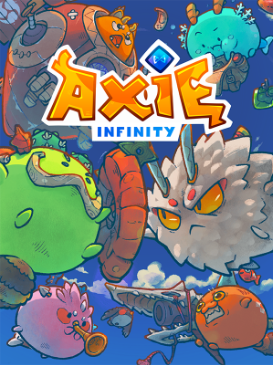Abstract
The Metaverse represents an interconnected network of persistent 3D virtual worlds, envisioned as the next evolutionary phase of digital interaction. Within these immersive environments, users seamlessly transition between professional collaboration, social engagement, and recreational activities. While no unified metaverse currently exists, pioneering platforms demonstrate core components through integrated virtual economies and social architectures.
Video games serve as critical proving grounds for metaverse technologies, with developers expanding functionality beyond entertainment into commerce and community building. The symbiotic relationship between blockchain and metaverse ecosystems enables novel digital economies through utility tokens and NFT-based asset ownership. Cryptographic wallets and decentralized governance further provide infrastructure for user-controlled virtual societies.
Emerging play-to-earn models exemplify early economic frameworks where global participants generate sustainable income. As technological convergence accelerates, both corporate entities and decentralized communities contribute to shaping this digital frontier.
Introduction
Digital convergence erases boundaries between physical, financial, and virtual realms. Contemporary interfaces deliver instant access to multifaceted services, with blockchain applications transitioning from niche to mainstream adoption. NFTs, decentralized gaming, and crypto payments now constitute foundational elements of metaverse development, creating universally accessible experiential layers.
What is The Definition of Metaverse?
Conceptualized as a unified continuum of 3D social spaces, the metaverse integrates diverse aspects of human experience through persistent virtual environments. This paradigm extends beyond current internet models, much like web browsers unified disparate websites.
Originating in Neal Stephenson's 1992 novel
Snow Crash, this vision now approaches technical feasibility. Augmented reality interfaces enable user embodiment via avatars – attending virtual conferences through VR headsets before transitioning to blockchain gaming sessions and managing digital asset portfolios within the same ecosystem.
Contemporary virtual worlds like
Fortnite and collaborative platforms such as
Gather.Town demonstrate proto-metaverse characteristics by blending social, professional, and recreational functions. The mature metaverse will further incorporate decentralized governance, digital identity systems, and creator economies, with blockchain providing the trust infrastructure for user-owned virtual assets.
Why Are Video Games Related to Metaverse?
Video games focus on 3D virtual reality, which can bring the experience closest to the metaverse. This isn't just because video games use 3D special effects. Today, the services and functions provided by video games have penetrated into other aspects of life. The video game Roblox has even hosted virtual events such as concerts and parties. Players no longer simply play games, they view them as activities in "cyberspace" and a part of life. For example, in the multiplayer game Fortnite, 12.3 million players participated in Travis Scott’s virtual music tour within the game.
How Do Cryptocurrencies Fit Into the Metaverse?
Blockchain's Foundational Role
Cryptocurrencies address five metaverse imperatives:
| Function |
Blockchain Solution |
| Digital Ownership |
Non-custodial wallets provide cryptographic proof of asset control |
| Scarcity Enforcement |
NFTs authenticate uniqueness and provenance of virtual items |
| Value Transfer |
Cryptocurrencies enable borderless transactions with cryptographic security |
| Governance |
DAO structures facilitate participatory rule-making |
| Interoperability |
Cross-chain protocols enable asset mobility between platforms |
Unlike centralized gaming economies, blockchain-based systems ensure user sovereignty through transparent, auditable mechanisms. The gamification of DeFi (GameFi) further demonstrates converging trajectories between these domains.
What is Metaverse Work?
As mentioned above, the Metaverse brings together all aspects of life in one place. While many people are already working from home, in Metaverse you can enter a 3D office and interact with "virtual avatars" of your colleagues. Your job may also be related to Metaverse, earning income that can be used directly within the Metaverse. In fact, similar forms of work are already emerging.
Today, GameFi and the "play and earn" model are creating a stable source of income for players around the world. These online jobs are great options for future Metaverse projects, and they show that people are willing to invest time, enjoy life and earn income in the virtual world. "Play and earn" games like Axie Infinity and Gods Unchained don't even have 3D worlds or avatars. However, the principle they espouse is that they can become an integral part of the metaverse, creating a way to make money entirely in the online world.
Metaverse Examples
While a single linked metaverse has not yet been created, we can experience many metaverse-like platforms and projects. They often incorporate NFTs and other blockchain elements. Let's look at the following three examples:
"SecondLive"
"SecondLive" is a 3D virtual environment where users can control avatars to participate in social interaction, study and work. The project also launched an NFT marketplace for exchanging collectibles. In September 2020, "SecondLive" held the Binance Smart Chain Harvest Festival as part of its anniversary celebrations. The virtual expo showcases various projects in the Binance Smart Chain (BSC) ecosystem for users to explore and interact with.
《Axie Infinity》
《Axie Infinity》is a "play and earn" game that creates a stable income for players in developing countries. By purchasing or receiving three creatures named "Axie" as a gift, players can harvest "Smooth Love Potion" (SLP) tokens. After selling on the open market, players can earn approximately $200 to $1,000, depending on how deep into the game they are and the market price.
Although "Axie Infinity" does not provide a single 3D character or avatar, it provides users with metaverse-like job opportunities. You may have heard of Filipinos playing the game as an alternative to full-time jobs or social benefits, which has become a well-known anecdote.
Future Trajectory
Technology conglomerates (Microsoft, Meta, Apple) invest heavily in metaverse infrastructure, while blockchain-native projects pioneer user-owned economies. Critical development vectors include:
-
Cross-platform avatar persistence
-
Standardized NFT interoperability frameworks
-
Scalable VR/AR interfaces
-
Decentralized identity solutions
The convergence of enterprise resources and community-driven innovation suggests two complementary metaverse iterations: corporate-controlled ecosystems and open-source virtual nations.
Conclusion
Although unified metaverse realization remains distant, its foundational technologies demonstrate accelerating maturity. Blockchain-enabled digital ownership and decentralized governance provide critical frameworks for user sovereignty, while immersive interfaces evolve toward seamless reality integration. Current platforms offer valuable proving grounds for what may ultimately become humanity's primary digital frontier.
CoinCatch Team
Disclaimer:
Digital asset prices carry high market risk and price volatility. You should carefully consider your investment experience, financial situation, investment objectives, and risk tolerance. CoinCatch is not responsible for any losses that may occur. This article should not be considered financial advice.


